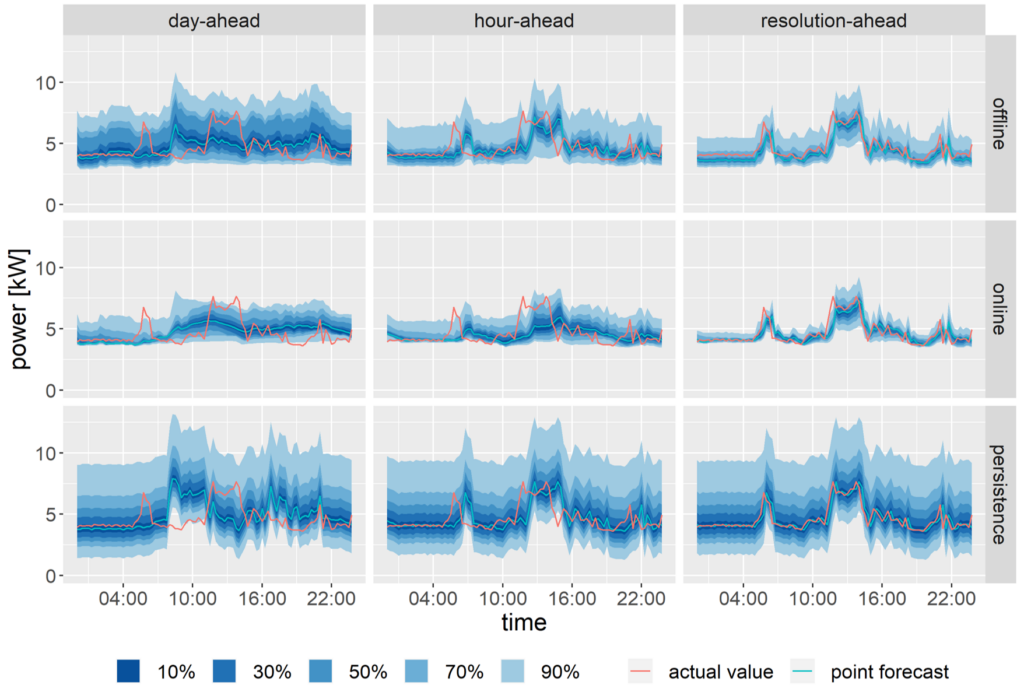Projects
Probabilistic Load Prediction for Optimized Grid Operation

The use of short-term predictions at the customer level – be it minutes or days in advance – is of great help for better grid operation. The granular data collected via smart meters and appliance sensors can be leveraged as input to machine learning approaches that provide predictions for the desired time range. At the transmission level or highly aggregated level, deterministic forecasting algorithms can adequately predict the relatively smooth and periodic load.
However, the load in distribution grids – especially at the customer level – is highly volatile such that deterministic approaches are not satisfactory. Hence, due to the high inherent uncertainty of the load, probabilistic approaches (i.e., distributions and probability quantiles instead of deterministic values) are necessary. Probabilistic forecasting algorithms can cover the entire uncertainty range without assuming specific error distributions.
Several ensemble forecasting algorithms have been developed and tested on load profiles measured in the NEST building. In the first stage, several base models are trained on historical data to provide single independent forecasts. In the second stage, an offline ensemble approach is designed based on the single forecasts. In a third stage, each new data point is considered by an online approach to fine-tune the ensemble model and adapt it to the most recent trend. At the difference of offline learning, online learning can update the model parameters in operation, i.e., after the training phase.
Both deterministic and probabilistic algorithms are tested and compared against a benchmark persistence model, considering multiple forecasting horizons. In terms of deterministic algorithms, Feed-Forward Neural Network (FFNN), Least-Square Stochastic Gradient Descent (LSSGD), Least-Square Adam (LSAdam), and Passive-Aggressive Regression (PAR) have been considered. In terms of probabilistic forecasting algorithms, Quantile Stochastic Gradient Descent (QSGD), Quantile Adam (QAdam), and Quantile Passive-Aggressive Regression (QPAR) have been considered. Results show that all deterministic algorithms perform similarly to the basic persistence model and generally fail to provide reasonable forecasts due to the high load volatility and unpredictability, especially with day-ahead and hour-ahead horizons. Deterministic forecasting algorithms are therefore not suitable for such highly volatile loads. In contrast, probabilistic forecasting algorithms can provide reasonable uncertainty bands and consistently outperform the persistence model according to the pinball loss, average coverage error, and sharpness.
Based on these results, future steps will focus on the design of predictive control algorithms for demand response purposes. In fact, distribution system operators can potentially make use of the flexibility of some domestic devices (e.g., heat pumps, water heaters, dishwashers, washing machines, dryers, and refrigerators) without considerably impacting the comfort of the users. This relies on the proper integration of the aforementioned forecasting algorithms into data-driven control schemes. Finally, the project will study how the implementation of prediction and data-based control algorithms can co-exist with ensuring sufficient privacy of the consumer.
Please contact Thierry Zufferey and Gabriela Hug for more information.
